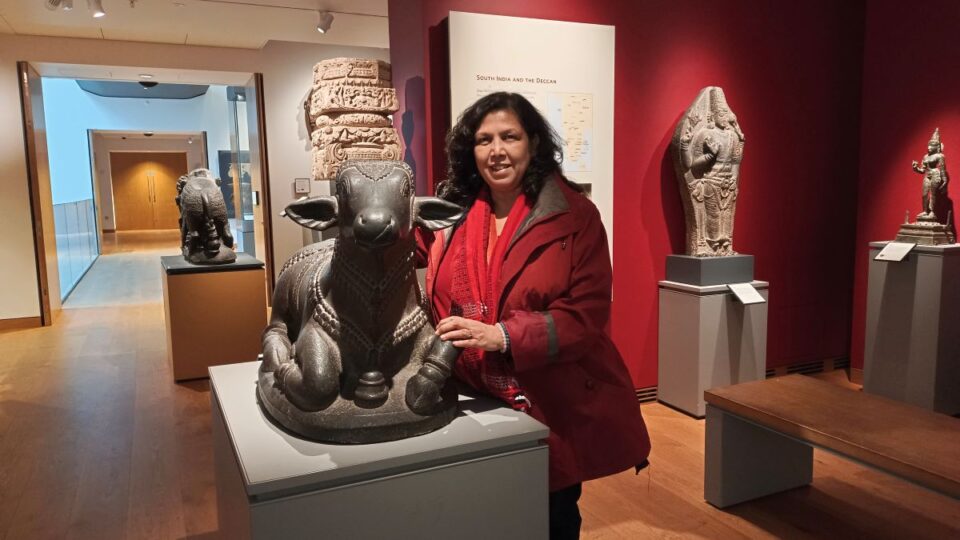THE WHODUNIT WANDERER, DR. MANJIRI PRABHU*
When destinations spin off ideas….
In a previous article, I have already explained why Oxford became a character in my destination thriller ‘The Grand Oxford Mystery’. But sometimes the ‘how’ is as fascinating as the ‘why’ because the destination speaks and lends itself to the story in such a manner that it can only be termed as a mystical divine intervention into the plot.
Let me give you 4 examples.

My hotel room, on the famous High Street in the University of Oxford was a quaint space with a grand window overlooking part of a lush meadow, some massive tree and a dividing gray-stone wall. But the first face that greeted me when I entered my room was that of a dog. There were many framed pictures in the room but this one hung right over the bed. A picture of a dog in a Sherlock Holmes-kind-of-a cap. A calm yet contemplative expression on his doggie face. On a page with infinite words beginning with DOG…The framed picture took me by surprise, but as I continued researching alone in a strange place, this dog picture, hanging on the wall over my bed, offered the room a warm, protective and inspiring energy. One thought led to another and Archie, the dog character, was born!
Hence, Re Parkar has a co-investigator in ‘The Grand Oxford Mystery’, the 5th book in the destination thriller series. Archie. A dog with a history, on the brink of depression but with deadly secrets to share….but born in my imagination because of the framed pic in the hotel room and two dogs I encountered on my visit the Christ Church College.

Oxford University boasts unique museums but one particular museum that took my breath away was the Pitts River Museum. As described in the book – The galleried hall was a stunning gathering and exhibition of objects and artefacts, packed to the gills in cupboards, drawers and cases that defined the healing and dealing culture of energies. The massive hall itself emanated a strange glow in the hazy light of tubes.
What made it unique was several huge glass caskets and cupboards that filled up the hall. A Haida totem pole with three wooden figures sitting one on top of the other, dominated the hall, standing tall and overlooking all the glass-cased exhibits. The treasures inside the caskets were like worlds within themselves – History and origins of Writing, cupboards crowded with religious statues and relics from across the world. ‘Sympathetic Magic’ with a sheep’s heart stuck with pins and needles by a woman to break off evil spells, a stone from 1900 Oxfordshire which could be scraped and the powder mixed water to be given to children suffering from eruptive diseases, hundreds of charms against evil eye – amulets, charms and divination in varying shapes and sizes like shining pendants and coloured beads and bracelets, a natural stone cup from Mexico valued as a charm – the artefacts were countless.
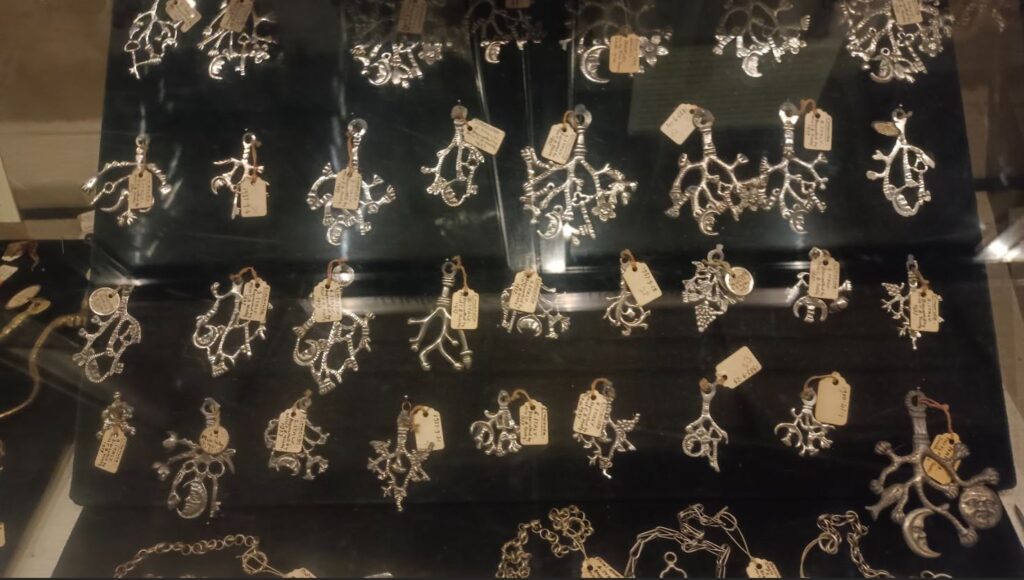
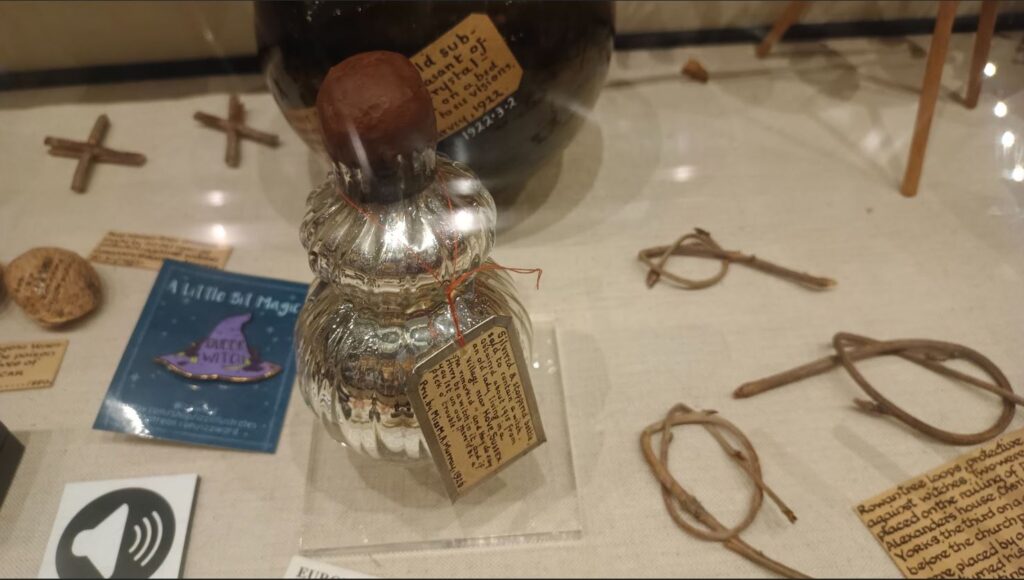
Each section of the Museum was perfect fodder for a suspense novel, but what caught my eye and eventually made its way into the novel was a 1915 Silver glass flask with a witch inside it! Startling, isn’t it?
Another interesting feature from Oxford that played an important role in the novel was ‘The Doctrine of Signatures’.
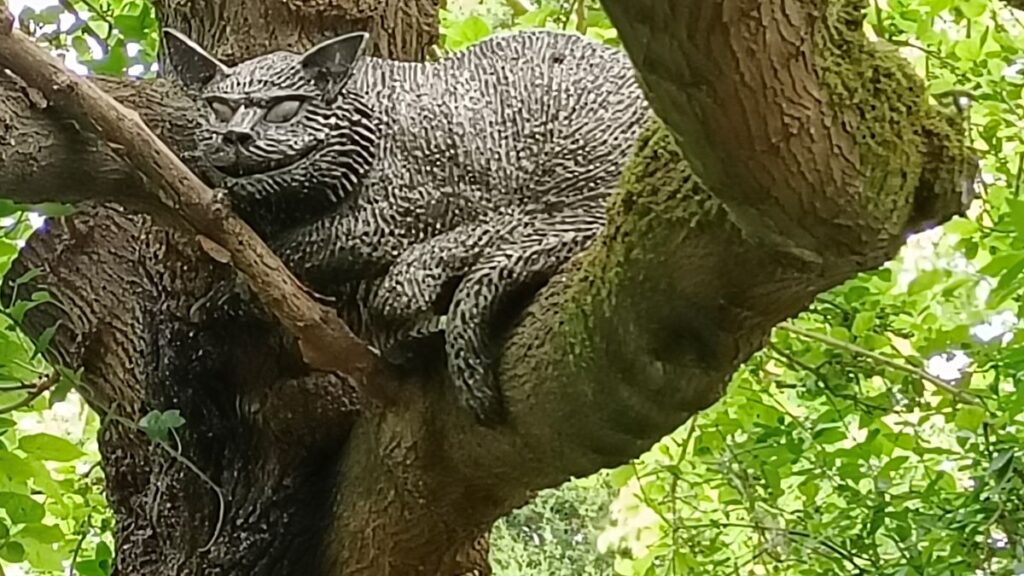
The Botanic Garden of Oxford is the oldest botanic garden in the UK. It was founded in 1621, and now contains over 5,000 species of plants. It’s got glass houses with carnivorous plants, literary gardens with poisonous plants that writers like Agatha Christie used in her books, or the Alice in Wonderland tree with the Cheshire Cat. It was also one of Tolkien’s favourite places, and his fondness for a large Austrian black pine, inspired the Ents, a race of giant, tree-like people. The Oxford Botanic Garden has also grown mandrakes for centuries (of Harry Potter fame) and they are part of the garden’s medicinal and poisonous plant collection.
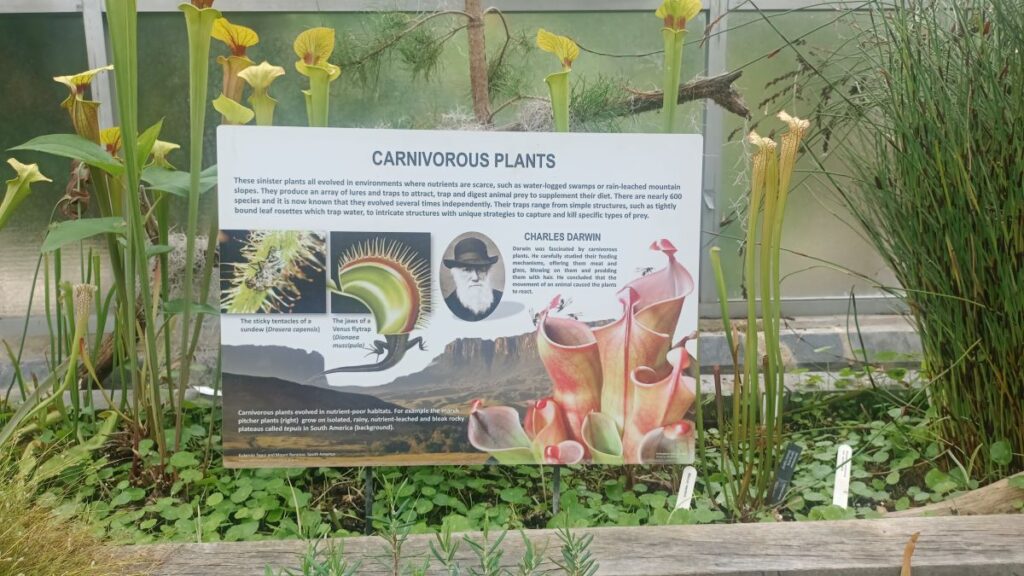
But again, what intrigued me instantly was a small patch of plants named ‘The Doctrine of Signatures’.
Paracelsus developed this concept in 1493 – It says that Nature marks each growth according to its curative benefits. William Coles, the 17th-century botanist believed that some plants were given signatures to put man on the right track. Robert Burton in his book ‘The Anatomy of Melancholy’ also refers to plants as a solution to melancholy and mental states. Hence the Doctrine of Signatures…One of the plants is Adonis Amurensis – apparently, it can be used as a tranquilizer. This patch of the Botanic Garden instantly became my focus of attention. Need I say why???
And lastly, it was while I was researching for ‘The Grand Oxford Mystery’ that I came across an interesting concept called ‘Letter Locking’.
Letter locking, which dates to the 13th century, is an important historical process of securing a letter. It is the act of folding a letter, (written on papyrus, parchment, or paper), by making cuts, holes, folds, slits and tucks. It is folded in such an intricate manner that a common person can’t unlock the letter-packet and read it, hence making it secure. This letter does not require an envelope but it is so expertly folded that it is tamper-proof. Kings, Queens and nobility used various folding and sealing techniques like spiral letter locks (especially used by Mary Queen of Scots and Elizabeth I of England), to send secret and private messages. Does my detective Re find a locked letter in ‘The Grand Oxford Mystery’? By now, you know the answer, don’t you?.
Researching for this book was indeed a thrilling journey but the many divine interventions not only made it charming, mystical and scientific at the same time but also personal and universal.

*Dr. Manjiri Prabhu is an award-winning international author, short filmmaker, and the curator & founder/director of two international festivals.



